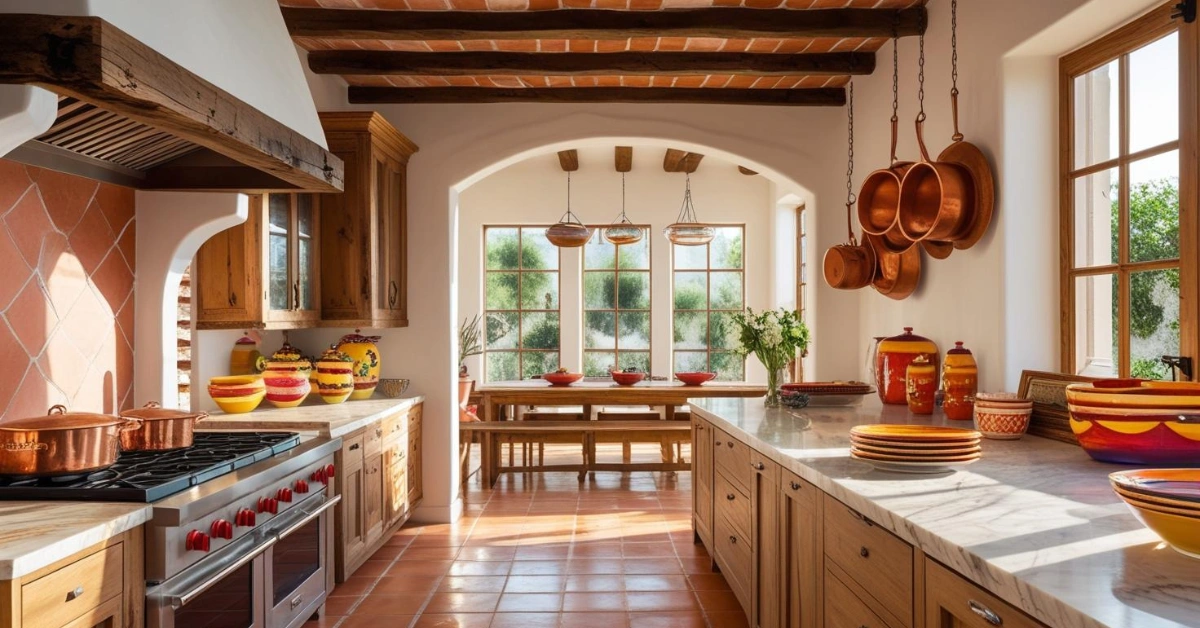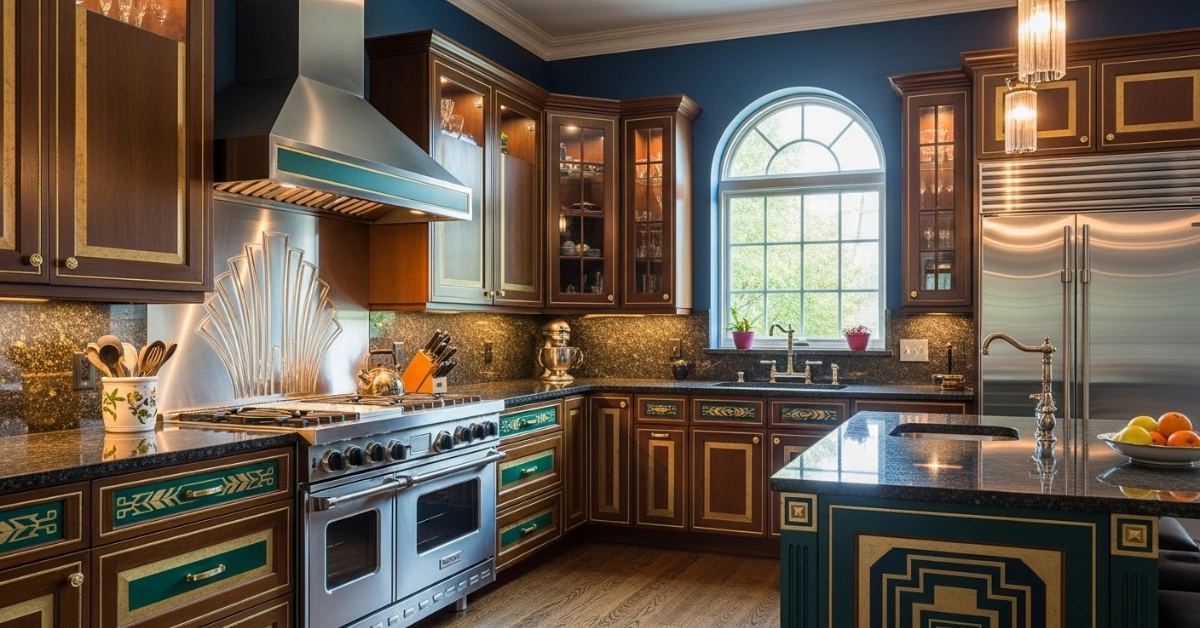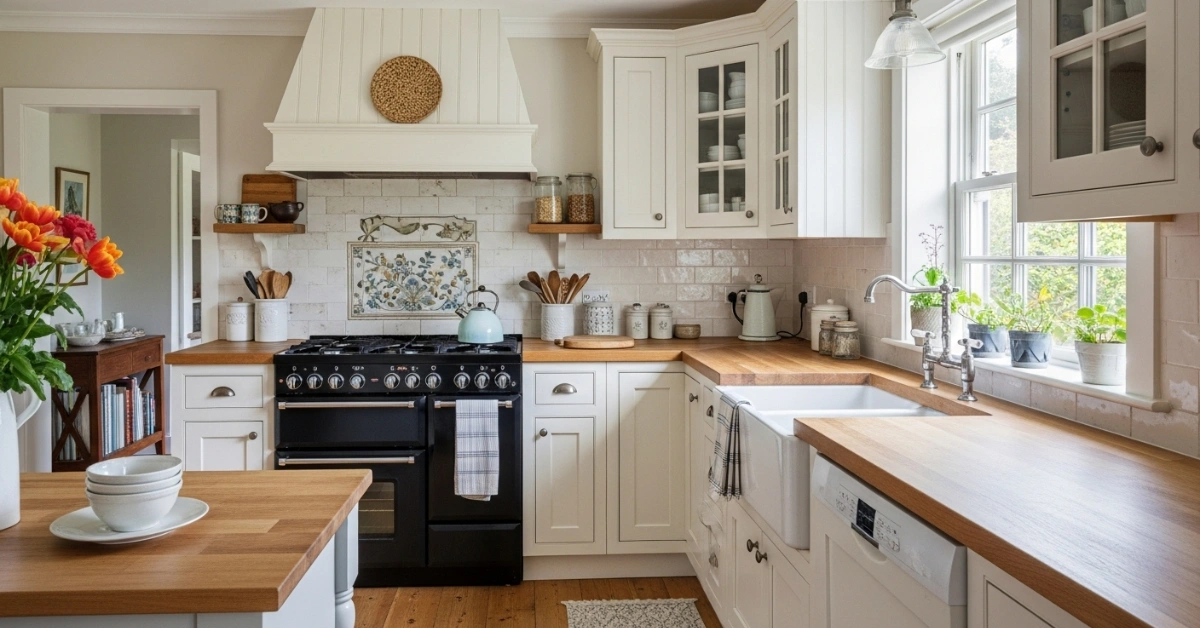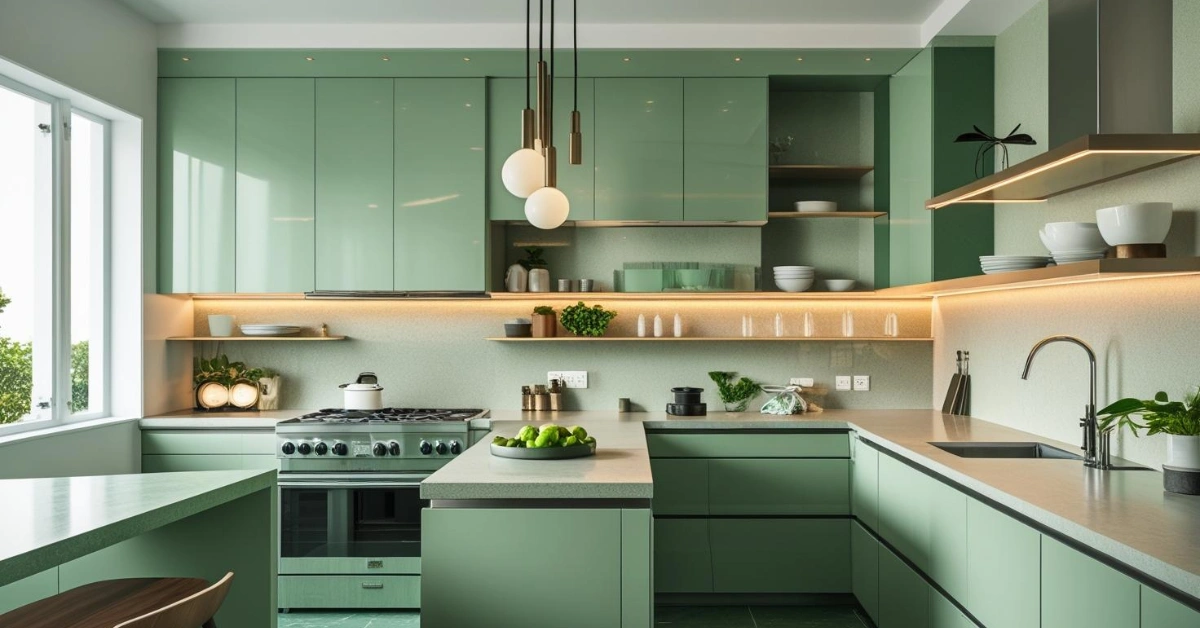26 Stunning Mediterranean Kitchen Design Ideas

Kitchens often feel cold or cluttered, leaving homeowners longing for a space that’s both functional and inviting. The struggle to balance aesthetics with practicality can make designing your dream kitchen daunting, especially when trends come and go. Mediterranean kitchen design offers a timeless solution, blending warmth, charm, and functionality inspired by coastal European homes. This style draws from the sun-soaked regions of Spain, Italy, and Greece, creating a space that feels like a welcoming retreat. In this guide, we’ll explore practical ideas, expert tips, and inspiring examples to help you craft a Mediterranean kitchen that’s both beautiful and enduring.
What Is Mediterranean Kitchen Design?
Mediterranean kitchen design is rooted in the architectural and cultural traditions of countries bordering the Mediterranean Sea. It emphasizes natural materials, earthy tones, and a relaxed, lived-in aesthetic. According to Architectural Digest, this style has been popular since the early 20th century, inspired by the rustic villas and coastal homes of Southern Europe. The design prioritizes warmth and functionality, making it ideal for those who want a kitchen that feels like the heart of the home.
This style combines old-world charm with modern sensibilities, using elements like exposed beams, textured walls, and vibrant tiles. It’s versatile enough to suit both traditional and contemporary homes, offering endless possibilities for customization.

Key Characteristics of Mediterranean Kitchens
- Natural Materials: Think stone countertops, terracotta tiles, and wooden cabinetry.
- Warm Color Palette: Earthy hues like terracotta, olive green, and creamy whites dominate.
- Textured Surfaces: Stucco walls, hand-painted tiles, and wrought iron accents add depth.
- Open, Airy Layouts: Large windows and open shelving create a spacious feel.
- Rustic Elegance: A balance of rugged textures and refined details, like arched doorways or vintage hardware.
Why Choose Mediterranean Kitchen Design?
Mediterranean kitchens are more than just a trend they’re a lifestyle. Here’s why this style resonates with homeowners:
- Timeless Appeal: Unlike fleeting modern trends, Mediterranean design feels classic and enduring.
- Warm Atmosphere: The cozy, inviting vibe makes it perfect for gatherings.
- Versatility: It blends seamlessly with farmhouse, rustic, or modern aesthetics.
- Connection to Nature: Natural materials and earthy tones create a grounded, organic feel.
Interior designer Maria Costa, who specializes in Mediterranean-inspired spaces, says, “This style is about creating a kitchen that feels like it’s been loved for generations, yet it’s practical for today’s busy families.”

Core Elements of Mediterranean Kitchen Design
To create an authentic Mediterranean kitchen, focus on these foundational elements. Each one contributes to the style’s signature look and feel.
1. Color Palette: Warm and Earthy Tones
The Mediterranean color palette is inspired by the landscapes of Southern Europe think sunbaked terracotta, deep blues, and sandy beiges. These hues create a cozy, welcoming vibe.
- Primary Colors: Warm whites, creams, and soft yellows for walls and cabinetry.
- Accent Colors: Olive green, cobalt blue, or burnt orange for tiles and decor.
- Pro Tip: Use a neutral base and add pops of color through accessories like curtains or pottery to keep the space vibrant yet balanced.

For example, in a recent project I saw, a homeowner painted their kitchen island a deep teal, paired with creamy white cabinets. The contrast was striking yet harmonious, embodying the Mediterranean spirit.
2. Natural Materials: Stone, Wood, and Terracotta
Mediterranean kitchens embrace raw, natural materials that age beautifully. According to House Beautiful, stone and terracotta are staples in Mediterranean homes, reflecting the region’s connection to the earth.
- Countertops: Opt for granite, marble, or soapstone with a matte finish.
- Flooring: Terracotta tiles or distressed wood planks add rustic charm.
- Cabinetry: Use reclaimed wood or distressed finishes for a lived-in look.
Example: A friend transformed her kitchen with terracotta floor tiles and a butcher-block countertop. The materials felt authentic and made the space feel like a Tuscan villa.

3. Textured Walls and Surfaces
Textured surfaces are a hallmark of Mediterranean design, adding depth and character. Stucco or plaster walls mimic the look of old European homes, while hand-painted tiles bring artistry to backsplashes.
- Wall Finishes: Apply a textured plaster or lime wash for a soft, organic look.
- Backsplash: Use ceramic or Talavera tiles with intricate patterns.
- Pro Tip: Mix and match tile designs for a patchwork effect, but keep the color scheme cohesive.
Designer Elena Martinez suggests, “Don’t shy away from imperfect textures they’re what make Mediterranean kitchens feel authentic and soulful.”

4. Architectural Details: Arches and Beams
Mediterranean kitchens often feature architectural elements like arched doorways, exposed wooden beams, or curved islands. These details add elegance and a sense of history.
- Arches: Incorporate arched niches for storage or display.
- Beams: Use reclaimed wood beams on ceilings for rustic charm.
- Example: In a Spanish-style home I visited, an arched pass-through between the kitchen and dining area became the focal point, blending form and function.

5. Lighting: Warm and Inviting
Lighting sets the mood in a Mediterranean kitchen. Opt for fixtures that feel handcrafted or vintage.
- Chandeliers: Wrought iron or lantern-style chandeliers add drama.
- Sconces: Place wall sconces with warm bulbs near work areas.
- Natural Light: Maximize windows or add skylights to let in sunlight.
Pro Tip: Use dimmable lights to create a cozy ambiance for evening gatherings.

Designing Your Mediterranean Kitchen: Practical Tips
Ready to bring Mediterranean charm to your kitchen? Here are actionable tips to guide your design process, tailored to various budgets and spaces.
1. Start with a Neutral Base
Begin with a neutral backdrop to make the space feel airy and timeless. Paint walls in warm whites or soft beiges, and choose cabinetry in natural wood tones or creamy hues.
- Budget Tip: If new cabinets are too costly, repaint existing ones and swap hardware for wrought iron or brass handles.
- Example: A colleague refreshed her dated kitchen by painting her cabinets a soft ivory and adding vintage-style pulls. The transformation was stunning and budget-friendly.

2. Incorporate Hand-Painted Tiles
Hand-painted tiles are a Mediterranean staple, adding color and personality to backsplashes or floors. According to Dwell, these tiles are often inspired by Moorish or Spanish designs.
- Where to Use: Backsplashes, accent walls, or even stair risers in open-concept kitchens.
- Budget Option: Use peel-and-stick tiles with Mediterranean patterns for a renter-friendly update.
- Pro Tip: Choose a mix of solid and patterned tiles for visual interest without overwhelming the space.

3. Add Rustic Furniture and Fixtures
Mediterranean kitchens often feature sturdy, rustic furniture like wooden tables or open shelving. These pieces feel handmade and timeless.
- Island or Table: A distressed wooden island doubles as a prep area and gathering spot.
- Shelving: Open shelves display ceramics, glassware, or woven baskets.
- Example: In a client’s kitchen, we installed open oak shelves to showcase colorful pottery, instantly elevating the space’s charm.

4. Embrace Wrought Iron Accents
Wrought iron adds a touch of old-world elegance. Use it sparingly to avoid a heavy look.
- Applications: Cabinet hardware, light fixtures, or pot racks.
- Pro Tip: Pair wrought iron with soft textures like linen curtains to balance the aesthetic.

5. Include Greenery and Natural Elements
Plants bring the Mediterranean’s connection to nature indoors. Use herbs, olive trees, or potted lavender to add life to your kitchen.
- Placement: Place small pots on windowsills or a large plant near a sunny corner.
- Pro Tip: Use terracotta or ceramic pots to tie in with the rustic theme.

Mediterranean Kitchen Layout Ideas
The layout of your kitchen plays a big role in its functionality and aesthetic. Here are three layout ideas inspired by Mediterranean design, each suited to different spaces.
1. Open-Concept Mediterranean Kitchen
Perfect for modern homes, an open-concept layout maximizes space and light.
- Features: A large island with seating, open shelving, and large windows.
- Best For: Families or frequent entertainers.
- Example: A homeowner I know created an open kitchen with a terracotta-tiled island and pendant lights, making it the hub of their home.

2. Cozy Galley Kitchen
Galley kitchens are narrow but can still exude Mediterranean charm.
- Features: Textured walls, a colorful tile backsplash, and compact wooden cabinetry.
- Best For: Small apartments or historic homes.
- Pro Tip: Use mirrors or glossy tiles to reflect light and make the space feel larger.

3. U-Shaped Mediterranean Kitchen
U-shaped kitchens offer ample storage and workspace, ideal for serious cooks.
- Features: Stone countertops, an arched niche for storage, and a mix of open and closed cabinets.
- Best For: Larger homes with room for multiple workstations.
- Example: A chef friend designed a U-shaped kitchen with a soapstone sink and hand-painted tiles, blending practicality with beauty.

Mediterranean Kitchen Design Inspirations
To spark your creativity, here are three unique Mediterranean kitchen design ideas, each with a distinct vibe.
1. Tuscan Villa-Inspired Kitchen
This style leans heavily into rustic elements, evoking the Italian countryside.
- Color Palette: Warm yellows, terracotta, and olive green.
- Key Elements: Exposed beams, a stone fireplace, and a large wooden table.
- Pro Tip: Add a vintage rug under the table for extra warmth.

2. Coastal Greek Kitchen
Inspired by the Greek Isles, this design is bright and airy with blue and white tones.
- Color Palette: Crisp whites, cobalt blues, and sandy beiges.
- Key Elements: Whitewashed walls, blue tile accents, and wicker furniture.
- Example: A beach house I visited had a Greek-inspired kitchen with blue shutters and a white island, feeling like a seaside escape.

3. Spanish Revival Kitchen
This style is bold and ornate, drawing from Spain’s rich architectural history.
- Color Palette: Deep reds, golds, and creamy whites.
- Key Elements: Talavera tiles, wrought iron chandeliers, and arched doorways.
- Pro Tip: Use a statement chandelier as the focal point to tie the room together.

Common Mistakes to Avoid in Mediterranean Kitchen Design
Even with the best intentions, it’s easy to make missteps. Here are pitfalls to avoid:
- Overloading with Patterns: Too many patterned tiles can feel chaotic. Stick to one or two designs.
- Ignoring Lighting: Harsh overhead lights can ruin the cozy vibe. Opt for warm, layered lighting.
- Skipping Texture: Smooth, modern surfaces can feel out of place. Embrace imperfections like distressed wood or textured plaster.
- Neglecting Functionality: Ensure the layout supports your cooking and entertaining needs.
Interior designer Luca Rossi advises, “Balance is key. A Mediterranean kitchen should feel warm and inviting, but it still needs to work for your daily life.”
Cost Considerations for Mediterranean Kitchen Design
The cost of a Mediterranean kitchen varies based on materials and scope. Here’s a breakdown:
| Element | Budget Option ($500–$5,000) | Mid-Range Option ($5,000–$15,000) | High-End Option ($15,000+) |
|---|---|---|---|
| Countertops | Laminate or butcher block | Granite or soapstone | Marble or custom stone |
| Flooring | Vinyl or ceramic tiles | Terracotta tiles | Handmade terracotta or stone |
| Cabinetry | Repainted existing cabinets | Custom wood with distressed finish | Reclaimed wood cabinetry |
| Backsplash | Peel-and-stick tiles | Ceramic tiles | Hand-painted Talavera tiles |
| Lighting | Basic pendant lights | Wrought iron chandeliers | Custom artisan fixtures |
Pro Tip: Start with small updates like tiles or hardware if you’re on a tight budget, and save for bigger investments like countertops.
Maintaining Your Mediterranean Kitchen
To keep your kitchen looking timeless, follow these maintenance tips:
- Clean Natural Materials: Use gentle cleaners on stone countertops to preserve their finish.
- Protect Tiles: Seal terracotta tiles annually to prevent stains.
- Refresh Paint: Touch up textured walls every few years to maintain their warmth.
- Update Accessories: Swap out curtains or pottery seasonally for a fresh look without major changes.

Conclusion
Mediterranean kitchen design is more than a style it’s a way to bring warmth, charm, and functionality into the heart of your home. By blending natural materials, earthy tones, and rustic elegance, you can create a space that feels both timeless and personal. Whether you’re drawn to the cozy vibes of a Tuscan villa, the airy charm of a Greek coastal kitchen, or the bold flair of a Spanish revival, this style offers endless inspiration. Start small with tiles or paint, or go all-in with a full renovation the possibilities are endless.
Ready to transform your kitchen? Consult a local interior designer or visit a home improvement store to explore Mediterranean-inspired materials. Share your dream kitchen ideas in the comments or start sketching your design today!






